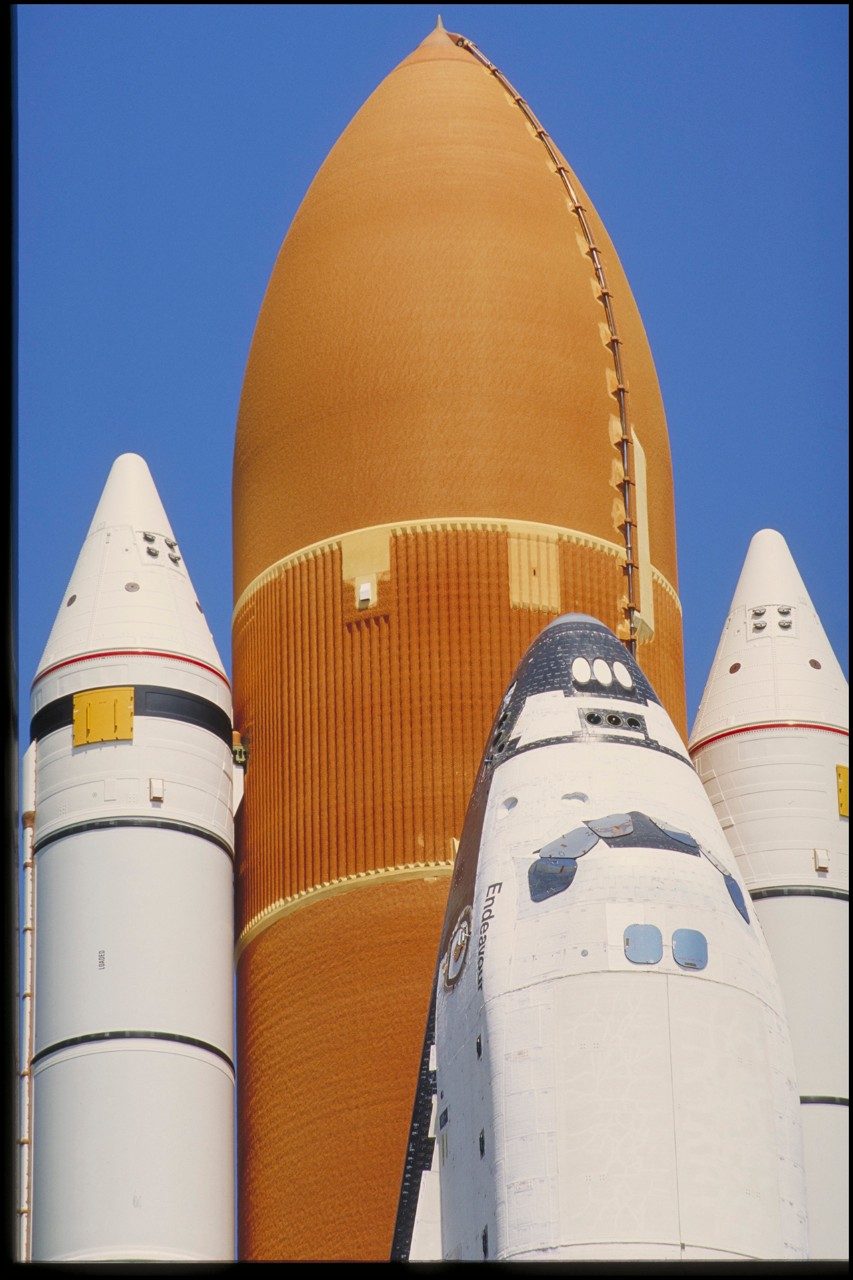Powering the Space Shuttle
October 01, 2020
On April 12, 1981, the space shuttle Columbia launched from Cape Canaveral, Florida, on its first official mission, beginning an era of manned spaceflight unlike any before or since. Columbia looked more like a sophisticated plane than the bubble-with-legs design of the Apollo moon landers. The space shuttle missions were also quite different. This was no race to the moon—this was to be sustained science and space exploration.
Columbia, Challenger, Discovery, Atlantis, and Endeavour. For decades, space shuttles were the symbol of space exploration and innovation, and they were fueled by an iconic burnt-orange external tank that was designed and built by Lockheed Martin.

The structural backbone of every shuttle takeoff, the tanks were the largest component of each shuttle at 154 feet in length—longer than the Statue of Liberty—and were composed of nearly a half-million parts. The external tank that launched Columbia’s first mission in 1981 weighed nearly 76,000 pounds, but by 1998 Lockheed Martin had developed the Super Lightweight Tank, lowering the weight of the external tank to approximately 58,500 pounds. This change in design and the shift to a lighter aluminum-lithium alloy made it possible for shuttles to carry greater payloads, a breakthrough that allowed the shuttle to deliver to orbit the construction modules that became the International Space Station.

With work to be done delivering payloads from the shuttle, the shuttle astronauts’ maneuverability in space outside of the craft, became a new challenge. To meet this need, Martin Marietta designed and built the Manned Maneuvering Unit, a “jetpack” that allowed astronauts on three shuttle missions to carefully control their movements in space without being tethered to the shuttle. With 24 hand-controlled thrusters, the backpack provided the astronauts subtle direction and speed control. This gave them the freedom to perform repairs to the shuttle itself and, in 1984, to the Solar Max satellite, which doubled the satellite’s mission time.
Sources and Additional Reading
- Harwood, William B. Raise Heaven & Earth. New York: Simon & Schuster, 1993.
- Jenkins, Dennis R. Space Shuttle: The History of the National Space Transportation System: The First 100 Missions, 3rd Edition. Dennis Jenkins, 2001.
- “External Tank by the Numbers,” LM Space Systems Company.
- “Space Shuttle External Tank Fact Sheet,” LM Space Systems Company.
- NASA Shuttle Operations Archives, accessed 16 July 2012 and http://www.nasa.gov/mission_pages/hubble/story/index.html, accessed 16 July 2012.




